Initiating a full CRM data systems migration? Discover straightforward, step-by-step guidance to simplify your full CRM data migration tool and system transition and maintain immaculate data quality.
Our guide arms you with comprehensive checklist of essential CRM migration strategy and playbook for a successful and existing system migration, enabling your business to benefit from new CRM functionalities while preserving uninterrupted operations.
Embark on a hassle-free CRM systems migration journey with confidence.
Key Takeaways
-
CRM data migration is a complex process requiring careful planning, assessment of current software, clear objectives, and the selection of a suitable migration partner.
-
Challenges around CRM migration strategies such as data quality issues, technical complexity, and time constraints must be managed effectively with thorough preparation, use of the right tools, and strategic resource allocation.
-
Post-migration involves continuous improvement, regular system maintenance, user training, and measuring success metrics like data quality, user adoption, and ROI to ensure long-term CRM system efficiency.
Understanding CRM Data Migration
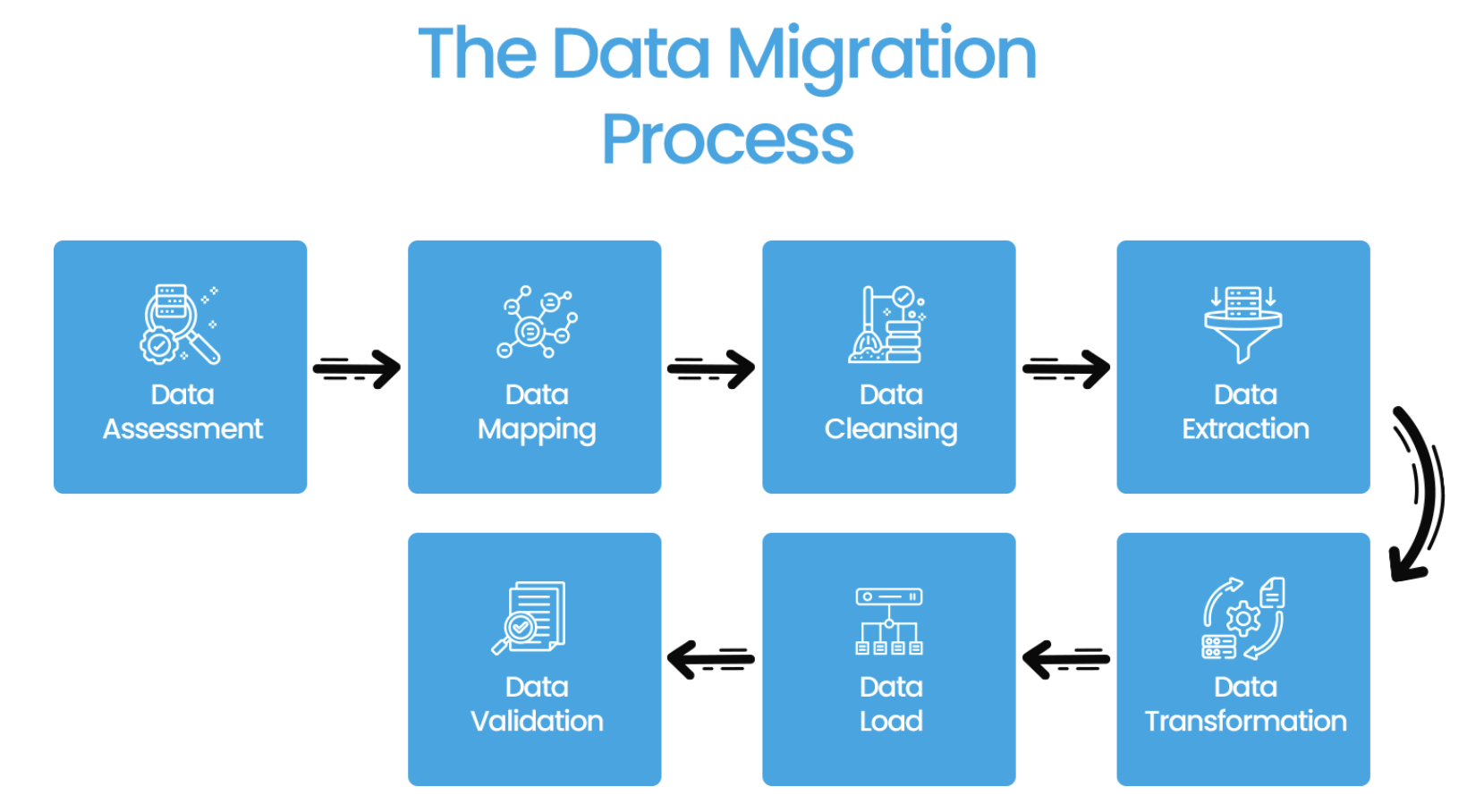
CRM data migration refers to the transition of customer data from one CRM system to another, which is often referred to as the CRM data migration process. It’s comparable to moving houses, where instead of furniture, valuable customer data is being relocated.
The objective is to accomplish a successful, CRM data migration process which enhances business efficiency, cuts costs, and strengthens customer service.
However, this isn’t a process to be taken lightly. It requires careful planning, the right tools, and a well-defined CRM data migration checklist. The benefits of migrating, though, are well worth the effort. Streamlined business operations, lower IT expenses, and improved customer service are just the tip of the iceberg.
Specialists are the new rockstars. For instance, let's say your company uses HubSpot then you naturally would search for HubSpot CRM migration service to ensure persons with subject matter expertise are working on your CRM migration.
Preparing for CRM Migration
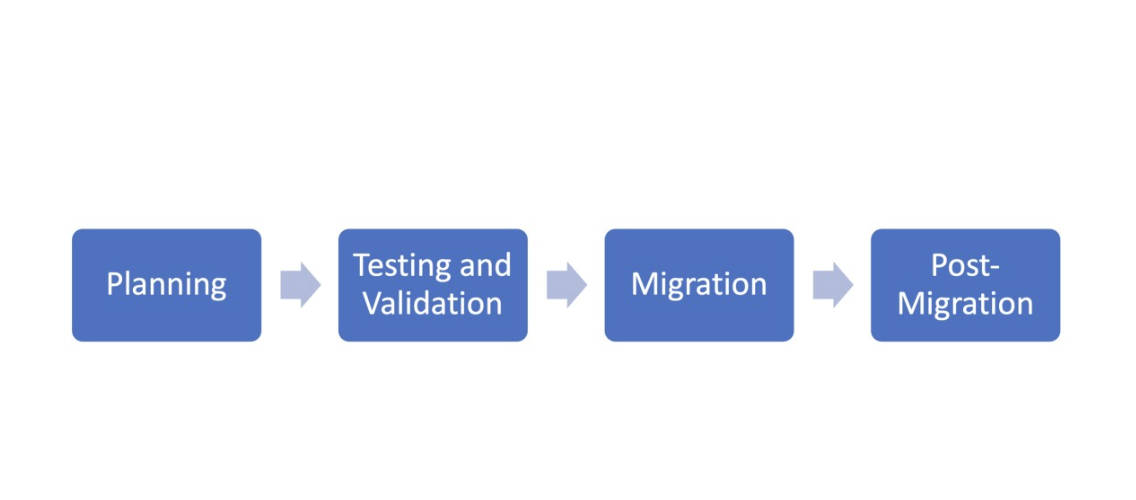
Proper preparation for a successful CRM migration move is as essential as checking your car and packing essentials for a road trip. It entails a few key steps: evaluating your current legacy CRM software, defining clear migration objectives, and selecting a suitable migration partner.
92% of businesses say CRM software plays an important role in achieving their revenue goals. webfx.com
We’ll delve further into each of these steps.
Assessing Current CRM Software
Before you can plan your journey to a new target CRM system and enterprise tools, you need to understand where you are now. This means evaluating your current target CRM system and software, its strengths, weaknesses, and areas for improvement.
Assessing your existing CRM system involves:
-
Identifying what’s not working
-
Understanding your CRM’s strengths and how they can be carried over to your new CRM platform
-
Analyzing the existing data models, communication issues, and the impact on your business culture
Setting Goals for CRM Migration
As a ship relies on a compass for navigation, your HubSpot CRM migration process requires clear objectives. These objectives might range from simple ones for routine tasks like enhancing data accuracy to ambitious ones for business processes like revolutionizing your business relationships and customer service and optimizing business processes.
Setting clear goals for your new CRM solution during migration has several benefits. It delineates the purpose of the new CRM solution, offers a clear trajectory for implementation, and enables the measurement of the final migration itself’s success. Just remember that setting goals isn’t a one-time activity but an ongoing process that should continue even after the final migration itself is complete.
Choosing the Right Migration Partner
Selecting the right migration partner equates to choosing a reliable co-pilot for a long journey. You need a partner who is familiar with the route, capable of handling complex situations, and committed to stay with you until the end.
A reliable migration partner:
-
Brings technical expertise to the table
-
Cleans and organizes data before the migration
-
Offers experience in planning and executing the migration process
-
Facilitates the seamless transfer of valuable information to the new CRM platform
Identifying and Addressing Common CRM Migration Challenges
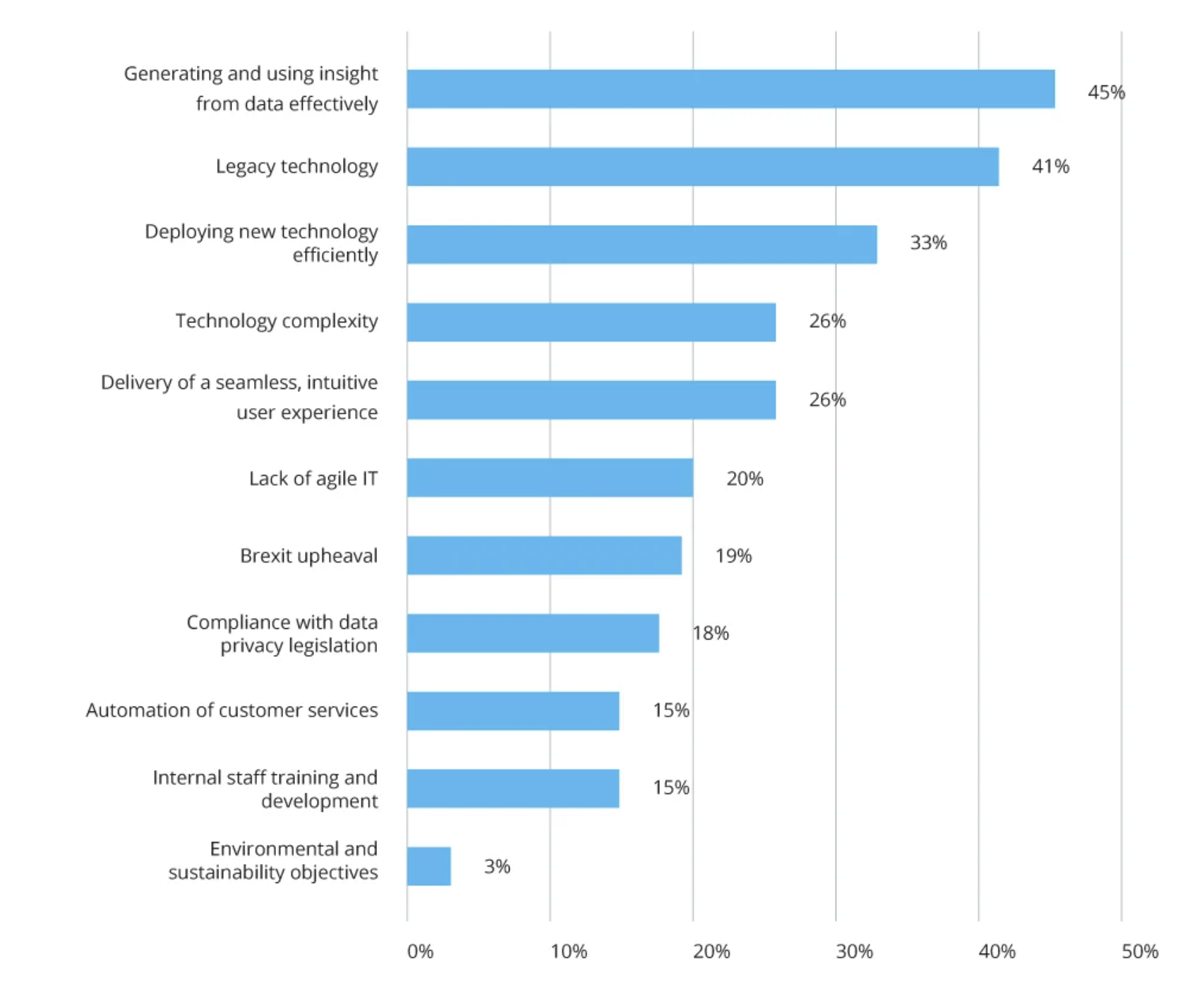
Similar to any journey, a CRM migration may present a variety of challenges. Early identification and appropriate handling of these challenges can make the difference between a smooth and successful migration and a tumultuous one.
23% of respondents highlight manual data input as a significant obstacle during CRM implementation and usage. startups.co.uk
We will examine the most frequent challenges and discuss strategies to overcome them.
Data Quality Issues
One of the most common challenges during CRM migration is data security and other important data quality, including maintaining historical data. Many businesses struggle with duplicate data, incomplete historical data, invalid data entry, and inconsistent data transfers or outdated information.
To tackle these issues, it’s crucial to clean and organize your existing data well before the migration. This involves removing errors, inconsistencies, and duplicates, standardizing fields, and removing stale data backup your contacts. By doing this, you ensure that only the most accurate and relevant data gets migrated to the new system.
Technical Complexity
Technical complexity is another challenge in the CRM data migration. Factors like system compatibility and network connectivity can disrupt the smooth transfer of data from one target or target from one CRM system or data migration system to another, leading to potential data integrity issues.
Overcoming technical complexity requires an experienced data migration partner and the right tools. An experienced test migration partner can offer practical assistance, technical expertise, and hands-on experience to navigate these complexities. Meanwhile, tools like Hevo Data can automate data transfer, reducing the risk of errors.
Time Constraints and Resource Allocation
Time constraints and resource allocation can also pose significant challenges during CRM data migration. A rushed data migration implementation plan can lead to mistakes and oversights transferring data elsewhere, while poorly allocated resources can result in inefficiencies.
To manage these challenges, it’s crucial to:
-
Set a realistic timeline and project plan
-
Allocate resources effectively
-
Prioritize tasks based on criticality
-
Track progress regularly
-
Foster effective communication among all stakeholders
By doing this, you can ensure that your new CRM platform the migration strategy stays on track and delivers the desired results.
Implementing CRM Migration Best Practices

Having covered the preparation and potential challenges associated data move, we will now delve into the full CRM data migration implementation process.
We will discuss the best practices for a seamless and successful CRM data migration migration through a few key steps of entire process, including data mapping and organization, testing and validation, and ultimately, employee training and support.
Data Mapping and Organization
Data mapping plays a crucial role in ensuring the success of the data migration process. It is a key step that impacts the accuracy and integrity of the data being transferred. It’s like a GPS for all your data, guiding it from the old system to the new one.
During CRM data migration and mapping, you align fields from one database with data transfers another to maintain data integrity and streamline the whole CRM data migration tool and process.
Organizing all your data is equally important. This entire process involves:
-
Cleaning your data
-
Standardizing fields
-
Associating related contacts, companies, and deals
-
Removing stale contacts
By keeping all your customer relationships and associated data very clean and organized, you ensure that your new CRM system starts off on the right foot.
Testing and Validation
Just as a car needs to be tested before it hits the road, your CRM migration needs to be tested and validated before it goes live.
This involves:
-
Testing the migration with a subset of data
-
Analyzing the data in the current CRM
-
Mapping the data
-
Backing up the data
-
Testing and migrating the data
Testing and validation can help you detect and correct errors before they become a problem. By doing this, you can ensure that your CRM migration is accurate, complete, and ready to deliver the benefits you’re looking for.
Employee Training and Support
A CRM system is only as good as the people who use it. That’s why employee training and support are crucial during and after a full CRM solution implementation and migration.
Training should be customized to specific roles and should include a comprehensive checklist documentation adequate training and guidelines. Support should be ongoing and responsive, ensuring that adequate training so that employees can quickly adapt to the new system and continue delivering top-notch customer service.
Post-Migration Optimization and Management
The process smooth migration doesn’t end with the completion of migration. It’s then time for post-migration optimization and management, which entails continuous improvement, recurring system maintenance, and sustained support to maximize the benefits business performance benefits of migrating to the new CRM system.
We will delve into these aspects more comprehensively.
Continuous Improvement
Continuous improvement is the key to getting the most out of your business disruptions new CRM software system. This involves regularly reviewing the new CRM software system, collecting feedback from users, and making necessary adjustments to optimize performance.
User feedback is a particularly valuable resource for continuous improvement. By listening to their experiences and addressing their concerns, you can enhance the usability of your existing CRM system and ensure that it continues to meet the evolving needs of your business.
Regular System Maintenance
Just as a car needs regular maintenance to stay in top shape, your customer relationship management (CRM) system needs regular maintenance to perform optimally.
This includes:
-
Regular software updates
-
Database maintenance
-
Data cleansing
-
User management
Regular maintenance of your CRM system offers several benefits, including:
-
Keeping your CRM system running smoothly
-
Enhancing sales performance
-
Providing in-depth analytics
-
Improving customer retention
By investing in enterprise tools and regular maintenance. legacy platform, you ensure that your business disruptions own legacy CRM solution continues to deliver value long after the migration is complete.
Evaluating CRM Migration Success
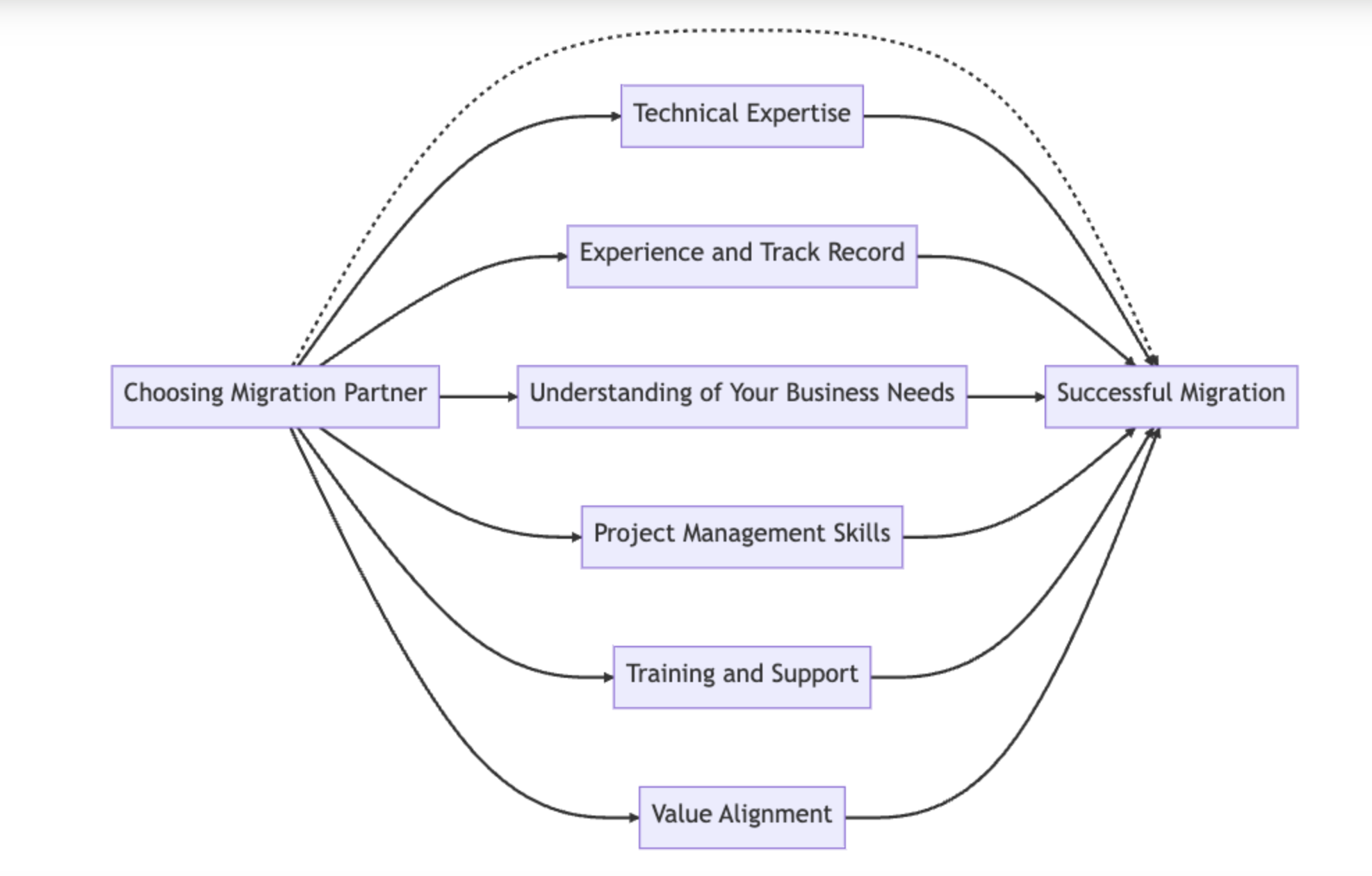
Upon completion of your CRM migration project, it is crucial to gauge its success. This implies evaluating key performance indicators (KPIs) such as migrated data, quality, user adoption, and return on investment (ROI).
30% of businesses say that closing deals is their number one challenge in sales. startups.co.uk
Evaluating the success of your CRM migration isn’t just about looking at numbers. It’s about understanding how the migration has improved your business operations, enhanced customer relationships, and contributed to your bottom line.
By measuring these factors, you can determine the effectiveness business performance of your CRM migration and get important data insights to make informed decisions for future improvements.
Case Studies: Successful CRM Migrations
Studying successful CRM migrations can yield valuable insights and lessons. A careful examination of these cases allows us to comprehend the strategies employed by these businesses, which can be applied to our own CRM migrations.
For example, one enterprise company successfully migrated source data from one large CRM to another by focusing on source data, mapping and transferring data organization.
Another case study highlights the importance of using communication channels setting clear migration goals and timelines with key stakeholders. Each of these case studies provides a roadmap for successful CRM migration, emphasizing the importance of using communication channels, careful planning and execution.
Top CRM Migration Tools and Services
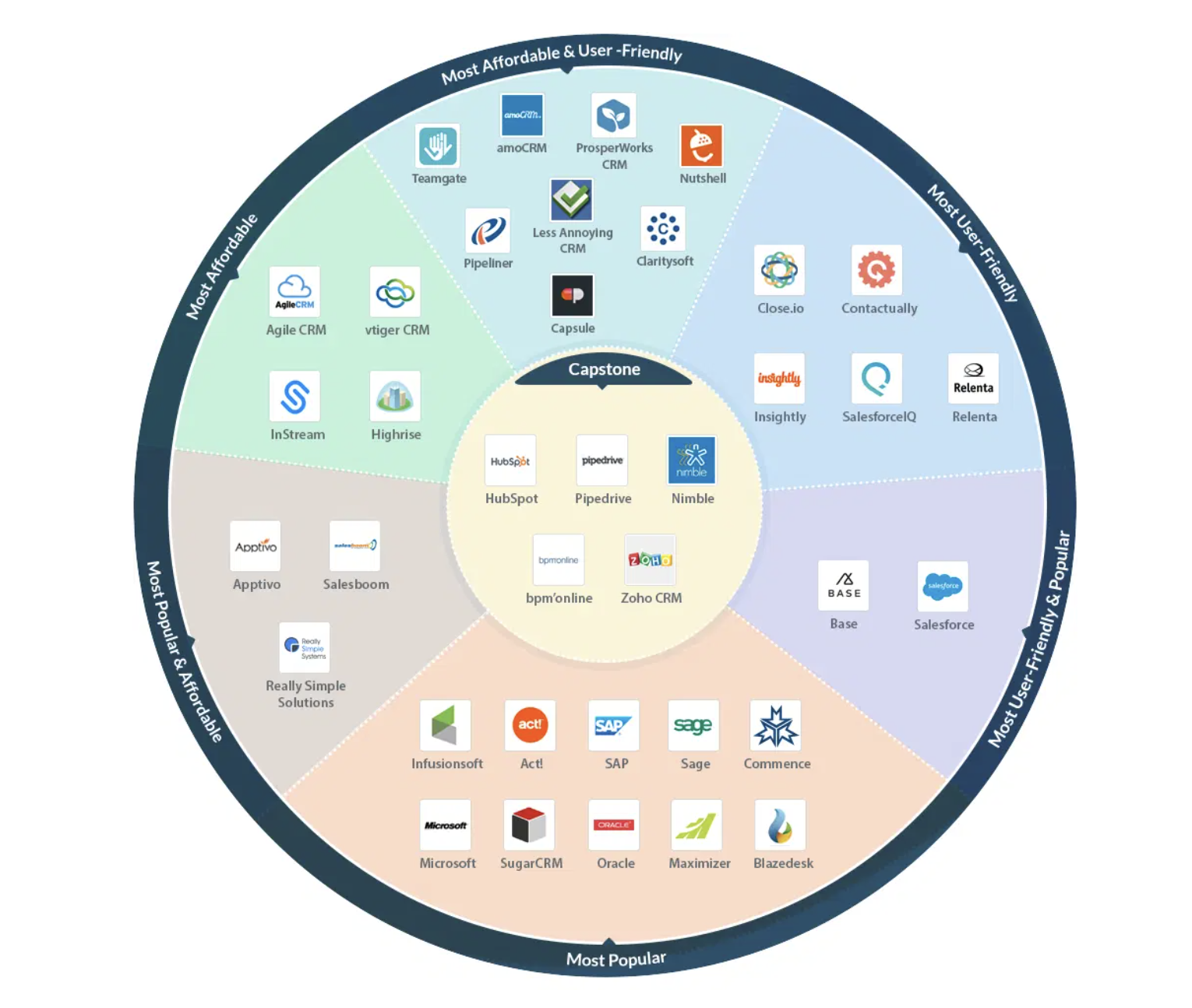
Although the right strategy and planning are critical for a successful your CRM implementation and data migration plan, the various data migration tools, and services you employ can equally contribute to the project scope success.
Leading CRM platforms, migration tools and professional services, include:
-
Hubspot
-
Zoho
-
Zendesk Sell
-
Freshsales CRM
These data migration tools can simplify the data migration process and guarantee a smooth migration and a more successful migration result.
These tools, such as the CRM data migration checklist tool offered by HubSpot, offer a wide range of features that can simplify the migration process. HubSpot's CRM data migration checklist, for instance, allows you to audit your current CRM system and migrate data, map out old data insights to your new target CRM system and data points, and prevent duplicates by writing unique IDs for migrated data.
On the other hand, Salesforce’s CRM migration tool enhances business efficiency and growth by automating repetitive tasks and optimizing the sales process. Choosing the right tools and the professional services, can thus be a game-changer for your CRM migration project.
Summary
In conclusion, a successful CRM migration strategy and implementation can be a powerful catalyst for business growth.
It’s about more than just moving data from one system to another. It’s about enhancing your own business processes and operations, improving your customer and business relationships, and driving your business forward.
With careful planning, the right tools and services, and a focus on continuous improvement, you can make your CRM implementation and migration strategy a resounding success.
Frequently Asked Questions
How do I migrate to a new CRM?
To migrate internal teams to a new CRM, prepare your team for the change, review the source and target of data backup from old CRM first, spend time on data mapping, compare old CRM and data structures first, create a migration tool, secure a data backup, run tests, and then migrate the old CRM and data.
This process will ensure internal teams have a smooth transition to the new system.
How long does a CRM migration take?
A CRM migration typically takes 8-12 weeks as it involves cleansing, migrating, and integrating various data structures, the entire complex process all of which can be delayed by missing data or list scrubbing processes.
How can I prepare for CRM migration?
To prepare for your CRM platform migration, assess your current two CRM platforms and software, set clear migration goals, test migration, and choose the right migration partner. Good luck with your next new platform migration!
What are some common challenges in CRM migration?
Common challenges in CRM migration encompass data quality issues data security, technical complexity, and time constraints to migrate data over. These can be effectively managed with careful planning and resource allocation from key stakeholders.

